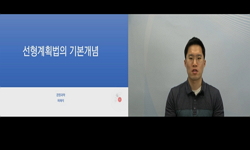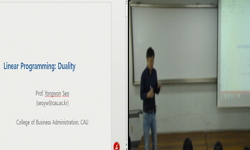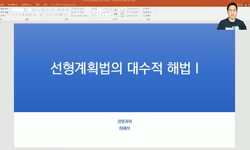본 연구는 선형계획법을 이용하여 나트륨의 제약조건 변화에 따른 최적 식품섭취패턴 변화를 살펴보고 보다 실현성이 높은 나트륨의 목표섭취량을 구하고, 이를 나트륨의 제약조건으로 최...
http://chineseinput.net/에서 pinyin(병음)방식으로 중국어를 변환할 수 있습니다.
변환된 중국어를 복사하여 사용하시면 됩니다.
- 中文 을 입력하시려면 zhongwen을 입력하시고 space를누르시면됩니다.
- 北京 을 입력하시려면 beijing을 입력하시고 space를 누르시면 됩니다.
https://www.riss.kr/link?id=A106348483
- 저자
- 발행기관
- 학술지명
- 권호사항
-
발행연도
2019
-
작성언어
Korean
- 주제어
-
KDC
590
-
등재정보
KCI등재,SCOPUS
-
자료형태
학술저널
- 발행기관 URL
-
수록면
342-353(12쪽)
-
KCI 피인용횟수
0
- DOI식별코드
- 제공처
-
0
상세조회 -
0
다운로드
부가정보
국문 초록 (Abstract)
본 연구는 선형계획법을 이용하여 나트륨의 제약조건 변화에 따른 최적 식품섭취패턴 변화를 살펴보고 보다 실현성이 높은 나트륨의 목표섭취량을 구하고, 이를 나트륨의 제약조건으로 최적 식품섭취패턴을 설계하는 것을 목적으로 수행되었다. 주요 결과는 다음과 같다. 나트륨의 제약조건 (2,000 mg)을 100 mg 단위로 증가시키면서 선형계획법을 이용하여 조미료의 최적섭취량을 성 및 연령별 여덟 집단에 대해 산출하였다. 조미료의 최적섭취량이 조미료의 실제섭취량의 25<SUP>th</SUP> 백분위수에 가장 가까운 경우의 나트륨 양은 남성 19 ~ 29세, 30 ~ 49세, 50 ~ 64세, 65세 이상에서 각각 3,600 mg, 4,500 mg, 4,200 mg, 3,400 mg, 여성 19 ~ 29세, 30 ~ 49세, 50 ~ 64세, 65세 이상에서 각각 2,800 mg, 3,100 mg, 3,100 mg, 2,500 mg으로 산출되었다. 이를 나트륨의 제약조건으로 하였을 때 성 및 연령별 여덟 집단의 최적 식품섭취패턴이 선형계획법을 이용하여 수학적으로 설계되었다. 결론적으로 나트륨의 제약조건을 2,000 mg으로부터 500 ~ 2,500 mg 정도 성 및 연령별로 상향 조정하였을 때 실현성이 높은 최적 식품섭취패턴이 설계되었다. 이 최적 식품섭취패턴에서는 여덟 집단 모두 공통적으로 채소류, 여성에서 우유 · 유제품류, 50 ~ 64세를 제외한 여성에서 과일류의 섭취량을 현재보다 더 늘릴 필요가 있는 것으로 나타났다.
다국어 초록 (Multilingual Abstract)
Purpose: The Dietary Reference Intakes for Koreans (KDRIs) suggest that the goal for the intake of sodium should be less than 2,000 mg, which is thought to be infeasible to achieve when eating the typical Korean diet. This study aimed to obtain the ne...
Purpose: The Dietary Reference Intakes for Koreans (KDRIs) suggest that the goal for the intake of sodium should be less than 2,000 mg, which is thought to be infeasible to achieve when eating the typical Korean diet. This study aimed to obtain the new intake goals for sodium with improved feasibility to achieve, and also to design optimized food intake patterns for Korean adults by performing linear programming. Methods: The data from a one day 24-hour dietary recall of the 2010 ~ 2014 Korea National Health and Nutrition Survey were used to quantify food items that Korean adults usually consumed. These food items were categorized into seven groups and 24 subgroups. The mean intakes and intake distributions of the food groups and the food subgroups were calculated for eight age (19 ~ 29, 30 ~ 49, 50 ~ 64, and over 65 years old) and gender (male and female) groups. A linear programming model was constructed to minimize the difference between the optimized intakes and the mean intakes of the food subgroups while meeting KDRIs for energy and 13 nutrients, and not exceeding the typical quantities of each of the food subgroups consumed by the respective age and gender groups. As an initial solution of the linear programming, the optimized intake of seasonings, including salt, was calculated as 0 g for all the age and gender groups when the sodium constraint was inserted not to exceed 2,000 mg. Therefore, the sodium constraint was progressively increased by 100 mg until the optimized intake of seasoning was obtained as the values closest to the 25<SUP>th</SUP> percentile of the intake distribution of seasonings for the respective age and gender groups. Results: The optimized food intake patterns were mathematically obtained by performing linear programming when the sodium constraint values were 3,600 mg, 4,500 mg, 4,200 mg, 3,400 mg, 2,800 mg, 3,100 mg, 3,100 mg, and 2,500 mg for the eight age and gender groups. Conclusion: The optimized food intake patterns for Korean adults were designed by performing linear programming after increasing the sodium constraint values from 2,000 mg to 2500 ~ 4,500 mg according to the age and gender groups. The resulting patterns suggest that current diets should be modified to increase the intake of vegetables for all the groups, milk/dairy products for the female groups, and fruits for the female groups except for the females aged 50 ~ 64 years.
참고문헌 (Reference)
1 박양희, "한국인의 성별, 연령별, 지역별 나트륨과 칼륨 섭취 현황 및 기여음식 : 2010-2012년 국민건강영양조사 분석" 대한지역사회영양학회 21 (21): 558-573, 2016
2 아사노가나, "선형계획법을 이용한 한국 성인의 최적 식품섭취패턴 설계 (Ⅰ) : 2010 ~ 2014년국민건강영양조사 자료 분석" 한국영양학회 51 (51): 73-86, 2018
3 김충호, "떡상품의 식사대용을 위한 소비자의 인식도 및 이용실태조사" (사)한국조리학회 13 (13): 59-68, 2007
4 연소영, "국민건강영양조사 식이섬유 성분표 구축 및 식이섬유 섭취 현황" 대한지역사회영양학회 21 (21): 293-300, 2016
5 Buttriss JL, "The eatwell guide refreshed" 41 (41): 135-141, 2016
6 Ministry of Health, Labour and Welfare, "Report of the investigative commission for 'Dietary Reference Intakes for Japanese (2015)'" Ministry of Health, Labour and Welfare 2015
7 Ministry of Health, Labour and Welfare, "Report of the investigative commission about the way of ‘healthy meal patterns’ for supporting longevity of Japanese" Ministry of Health, Labour and Welfare 2014
8 National Health and Medical Research Council, "New Zealand Ministry of Health. Nutrient Reference Values for Australia and New Zealand" National Health and Medical Research Council 2006
9 Soden PM, "Modifying diets to satisfy nutritional requirements using linear programming" 68 (68): 565-572, 1992
10 Ragsdale CT, "Managerial decision modeling" Mason 2011
1 박양희, "한국인의 성별, 연령별, 지역별 나트륨과 칼륨 섭취 현황 및 기여음식 : 2010-2012년 국민건강영양조사 분석" 대한지역사회영양학회 21 (21): 558-573, 2016
2 아사노가나, "선형계획법을 이용한 한국 성인의 최적 식품섭취패턴 설계 (Ⅰ) : 2010 ~ 2014년국민건강영양조사 자료 분석" 한국영양학회 51 (51): 73-86, 2018
3 김충호, "떡상품의 식사대용을 위한 소비자의 인식도 및 이용실태조사" (사)한국조리학회 13 (13): 59-68, 2007
4 연소영, "국민건강영양조사 식이섬유 성분표 구축 및 식이섬유 섭취 현황" 대한지역사회영양학회 21 (21): 293-300, 2016
5 Buttriss JL, "The eatwell guide refreshed" 41 (41): 135-141, 2016
6 Ministry of Health, Labour and Welfare, "Report of the investigative commission for 'Dietary Reference Intakes for Japanese (2015)'" Ministry of Health, Labour and Welfare 2015
7 Ministry of Health, Labour and Welfare, "Report of the investigative commission about the way of ‘healthy meal patterns’ for supporting longevity of Japanese" Ministry of Health, Labour and Welfare 2014
8 National Health and Medical Research Council, "New Zealand Ministry of Health. Nutrient Reference Values for Australia and New Zealand" National Health and Medical Research Council 2006
9 Soden PM, "Modifying diets to satisfy nutritional requirements using linear programming" 68 (68): 565-572, 1992
10 Ragsdale CT, "Managerial decision modeling" Mason 2011
11 Meneton P, "Links between dietary salt intake, renal salt handling, blood pressure, and cardiovascular diseases" 85 (85): 679-715, 2005
12 Briend A, "Linear programming : a mathematical tool for analyzing and optimizing children's diets during the complementary feeding period" 36 (36): 12-22, 2003
13 Ministry of Health and Welfare, "Korea Health Statistics 2017: Korea National Health and Nutrition Examination Survey" Korea Centers for Disease Control and Prevention 2018
14 Kurosawa M, "Highly salted food and mountain herbs elevate the risk for stomach cancer death in a rural area of Japan" 21 (21): 1681-1686, 2006
15 Korea Health Promotion Foundation, "Health promotion research brief 2016. The policy trends of sodium reduction and future tasks" Korea Health Promotion Foundation 2016
16 World Health Organization, "Guideline: sodium intake for adults and children"
17 Mozaffarian D, "Global sodium consumption and death from cardiovascular causes" 371 (371): 624-634, 2014
18 Maillot M, "Food pattern modeling shows that the 2010 Dietary Guidelines for sodium and potassium cannot be met simultaneously" 33 (33): 188-194, 2013
19 Park JH, "Estimated amount of 24-hour urine sodium excretion is positively correlated with stomach and breast cancer prevalence in Korea" 29 (29): S131-S138, 2014
20 Maillot M, "Energy allowances for solid fats and added sugars in nutritionally adequate U.S. diets estimated at 17-33% by a linear programming model" 141 (141): 333-340, 2011
21 Aburto NJ, "Effect of lower sodium intake on health:systematic review and meta-analyses" 346 : f1326-, 2013
22 National Health and Medical Research Council, "Eat for health Australian Dietary Guidelines summary"
23 Institute of Medicine, "Dietary reference intakes for water, potassium, sodium, chloride, and sulfate" The National Academies Press 2005
24 Ministry of Health and Welfare, "Dietary reference intakes for Koreans. 1st revision" The Korean Nutrition Society 2010
25 Ministry of Health and Welfare, "Dietary reference intakes for Koreans 2015" The Korean Nutrition Society 2015
26 Okubo H, "Designing optimal food intake patterns to achieve nutritional goals for Japanese adults through the use of linear programming optimization models" 14 (14): 57-, 2015
27 Levesque S, "Contribution to the development of a food guide in Benin : linear programming for the optimization of local diets" 18 (18): 622-631, 2015
28 National Health and Medical Research Council, "Australian and New Zealand nutrient reference values for sodium: a report prepared for the Australian Government Department of Health and the New Zealand Ministry of Health" National Health and Medical Research Council 2017
29 Moon HK, "Analysis of menu patterns from the Korean National Nutrition Survey in 1990" 9 (9): 241-250, 1994
30 Ministry of Health, Labour and Welfare, "About popularization of 'healthy meal patterns' for supporting longevity of Japanese" Ministry of Health, Labour and Welfare 2015
31 Hur IY, "A study on the menu patterns of residents in Kangbukgu(II) : compared by the sex, age and health risk" 6 (6): 809-818, 2001
32 Hur IY, "A study on the menu patterns of residents in Kangbukgu(I) : whole menu patterns and menu patterns by meal" 6 (6): 686-702, 2001
33 National Health and Medical Research Council, "A modeling system to inform the revision of the Australian guide to healthy eating"
34 Maillot M, "A conflict between nutritionally adequate diets and meeting the 2010 dietary guidelines for sodium" 42 (42): 174-179, 2012
동일학술지(권/호) 다른 논문
-
덖음온도를 달리하여 전저리한 삼백초 건조물의 이화학적 특성 및 물과 70% 에탄올 추출물의 항산화효과
- 한국영양학회
- 강명화
- 2019
- KCI등재,SCOPUS
-
인천지역 일부 고등학생의 편의점 편의식 이용빈도와 식사의 질과의 관련성
- 한국영양학회
- 김은미
- 2019
- KCI등재,SCOPUS
-
Effect of Yeonsan Ogye bioactive peptides on anti-oxidant indexes in rats’ liver
- 한국영양학회
- 김혜원
- 2019
- KCI등재,SCOPUS
-
한국 성인의 커피 섭취 유형에 따라 비만 및 복부비만에 미치는 영향 연구 : 2013~ 2016 국민건강영양조사 자료 활용
- 한국영양학회
- 박형섭
- 2019
- KCI등재,SCOPUS
분석정보
인용정보 인용지수 설명보기
학술지 이력
| 연월일 | 이력구분 | 이력상세 | 등재구분 |
|---|---|---|---|
| 2023 | 평가예정 | 해외DB학술지평가 신청대상 (해외등재 학술지 평가) | |
| 2020-01-01 | 평가 | 등재학술지 유지 (해외등재 학술지 평가) |  |
| 2013-07-24 | 학술지명변경 | 한글명 : 한국영양학회지 -> Journal of Nutrition and Health외국어명 : The Korean Journal of Nutrition -> Journal of Nutrition and Health |  |
| 2010-01-01 | 평가 | 등재학술지 유지 (등재유지) |  |
| 2008-01-01 | 평가 | 등재학술지 유지 (등재유지) |  |
| 2006-01-01 | 평가 | 등재학술지 유지 (등재유지) |  |
| 2001-01-01 | 평가 | 등재학술지 선정 (등재후보2차) |  |
| 1998-07-01 | 평가 | 등재후보학술지 선정 (신규평가) |  |
학술지 인용정보
| 기준연도 | WOS-KCI 통합IF(2년) | KCIF(2년) | KCIF(3년) |
|---|---|---|---|
| 2016 | 0.86 | 0.86 | 1.03 |
| KCIF(4년) | KCIF(5년) | 중심성지수(3년) | 즉시성지수 |
| 1.18 | 1.11 | 1.778 | 0.12 |






 ScienceON
ScienceON DBpia
DBpia






